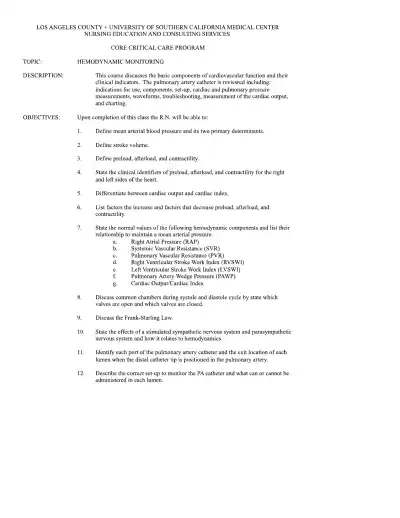Page 1

Loading page ...
LOS ANGELES County + USC Medical Center Core CC Program: Hemodynamic Monitoring—covers CV physiology, pulmonary artery catheter use (setup, pressures, waveforms, CO measurement) and related clinical indicators.

Loading page ...
This document has 3 pages. Sign in to access the full document!